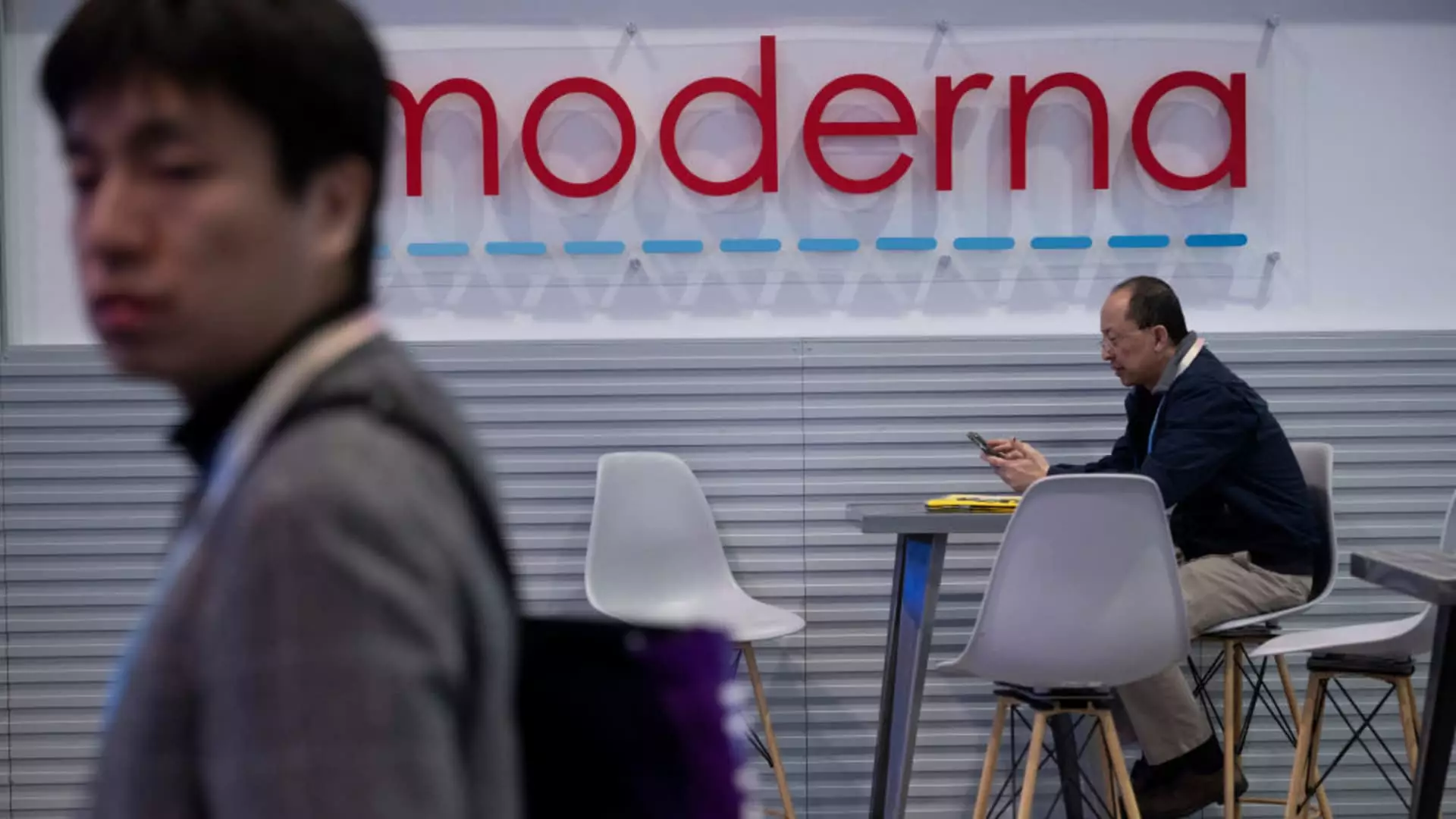Moderna, the prominent biotech firm renowned for its COVID-19 vaccine, has recently made headlines by revising its sales projections for 2025 downwards by approximately $1 billion. This adjustment reflects a complicated landscape characterized by various hurdles that the company expects to face. As Moderna grapples with these challenges, it is also undertaking strategic moves aimed at cost reduction and portfolio diversification.
In a stark turn, Moderna has updated its revenue expectations for 2025 to a range of $1.5 billion to $2.5 billion, which represents a significant decrease from a prior forecast of $2.5 billion to $3.5 billion. The company anticipates that the majority of its revenue will materialize in the latter half of the year, primarily driven by sales of its COVID-19 vaccine and the newly launched respiratory syncytial virus (RSV) vaccine. This revision comes in the context of Moderna’s optimistic projections in September when it had anticipated breaking even on an operating cash basis by 2028. Now, that timeline has shifted, reflecting the uncertainty the firm faces in the current vaccine marketplace.
As investors digested this news, shares of Moderna plummeted by 20% on Monday, further impacting other vaccine-related stocks, such as Novavax and BioNTech, which saw declines of 6% and 4%, respectively. This immediate market reaction underscores the weight of Moderna’s announcement and raises concerns about the sustainability of its revenue streams in a post-pandemic landscape.
Moderna’s Chief Financial Officer, Jamey Mock, outlined several key factors contributing to the company’s cautious outlook. First and foremost is the increasing competition within the COVID-19 vaccine market. Moderna’s share of the U.S. market has reportedly decreased, falling from 48% in 2023 to 40% at the end of 2024. Compounding this issue is a collaboration between Sanofi and Novavax that positions Novavax’s vaccine for stronger competition in global markets.
The second challenge is the declining vaccination rates across the United States, which have seen an overall decrease of about 7% compared to the previous year. This decline is indicative of a broader trend where consumers are less inclined to seek updated vaccinations. Additionally, Mock highlighted uncertainties over manufacturing contracts with nations and ambiguous recommendations from health authorities regarding RSV revaccination as contributing factors to the anticipated decline in sales.
Despite these drawbacks, Moderna remains committed to mitigating costs, planning to reduce cash expenditure by $1 billion in 2025, with an additional $500 million in anticipated savings for 2026. This cost-optimization strategy is vital in preserving cash flow as the company navigates these challenges while still making strategic investments to expand its offerings.
In the face of these adversities, Moderna is focusing on broadening its pipeline through the development of new products. Recent announcements indicate that the company is set to introduce ten new product approvals over the next three years, including a combination vaccine for both COVID-19 and influenza, as well as an advanced version of its existing COVID vaccine. Such diversification efforts seem to align with the firm’s strategy to leverage its messenger RNA technology, the innovative platform that underpins its previously successful vaccines.
The necessity for innovation in a saturated vaccine market only emphasizes the importance of Moderna’s forthcoming presentation at the annual JPMorgan Healthcare Conference. This highly anticipated event often serves as a critical venue for healthcare firms to forge new partnerships and explore collaborative opportunities that can drive growth. By showcasing its future plans and innovations, Moderna aims to inspire confidence among investors and industry stakeholders, thereby attempting to stabilize its market position.
Moderna’s lowered sales forecast for 2025 is reflective of an evolving and unpredictable vaccine landscape post-COVID-19. As competition ramps up and vaccination rates decline, the company is faced with the dual challenge of managing costs while simultaneously driving innovation to keep its product pipeline robust. Whether Moderna can successfully navigate through these headwinds and reclaim its standing in the market will ultimately depend on its strategic execution over the coming years. The company’s future actions will be closely monitored by investors and healthcare professionals alike, who are all keen to see how Moderna adapts to the constantly shifting healthcare environment.

